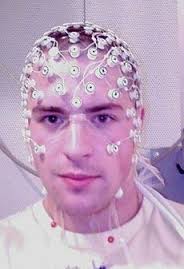Anyone who has ever driven a long distance will know the feeling of “zoning out”. You lose focus on the road, staring blankly in front of you, your reaction time lengthens, and sometimes people even fall asleep.
In the UK it is estimated that about 20% of accidents are caused by people nodding off at the wheel, but a breakthrough at the University of Leicester might help to put an end to this problem.
Researchers have been working on a system that combines high speed eye tracking and EEG technology, with one application being to alert drivers who show signs of drowsiness.
These forms of technology have traditionally been difficult to marry together, EEG use has been around for decades and any epileptic person will have had experience of it. The EEG system involves wearing a kind of cap with electrodes attached that measure neurone activity in the brain. Once a cumbersome affair this can now be carried out using a lightweight headset, a far cry from the rubber cap manually fitted with sensors and cables that I grew up with.
The eye monitoring technology involves infra red cameras measuring how LED light reflects from the user’s eyes, monitoring where the user is looking, how often they blink and other signs of distraction and sleepiness.
The researchers at Leicester have made the breakthrough of devising a way to use these different measurements together, something that has not been possible in the past.
Applications go much further than saving lives however. The developers point to uses for people who cannot use their arms, as they could control machinery using their eyes and thoughts. Even more importantly for some, the technology could be used to control video games, so that a player would no longer have to use a console of any sort but could communicate through measuring where their eyes were looking and the patterns in their brains.
More information is available here.

2 thoughts on “Asleep at the Wheel?”